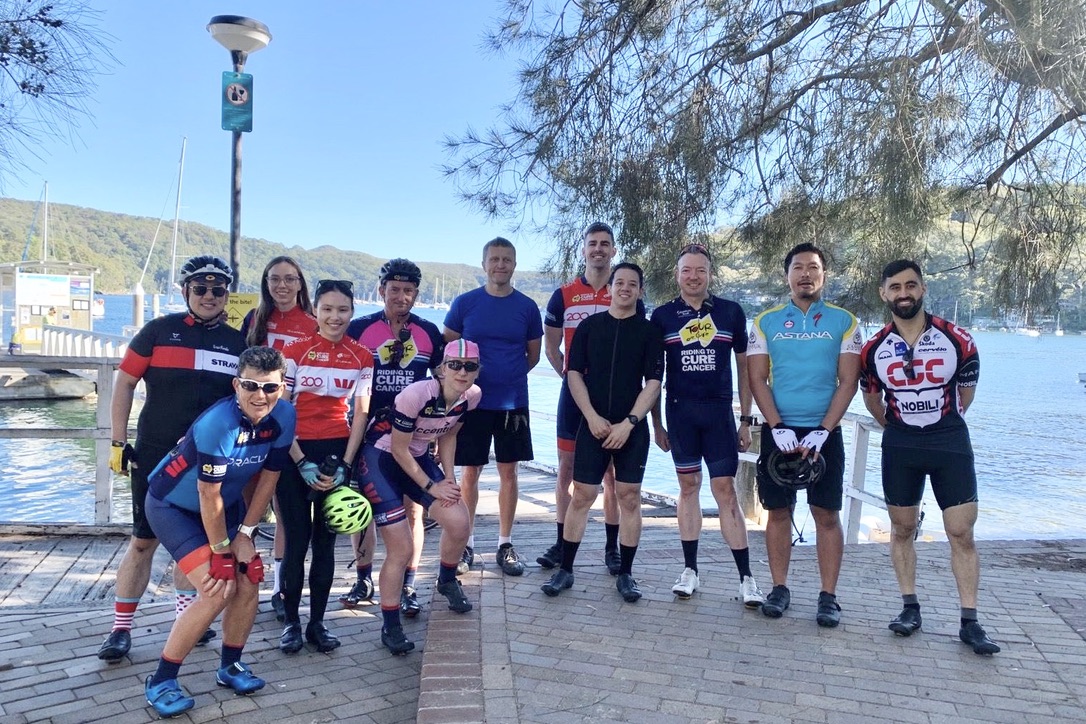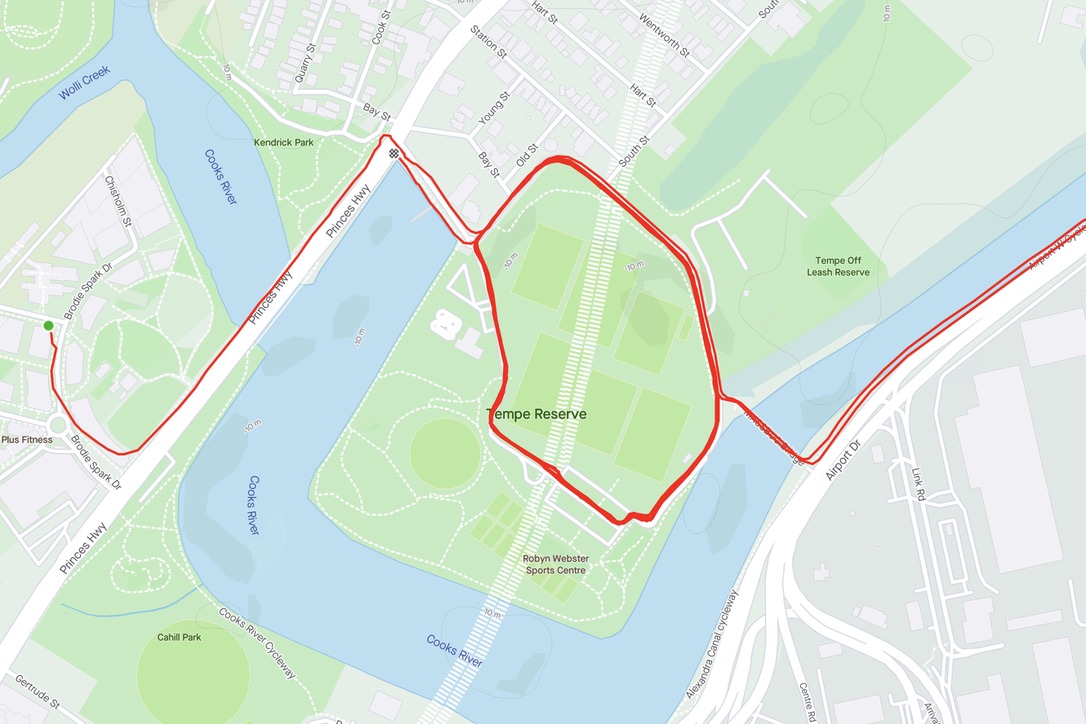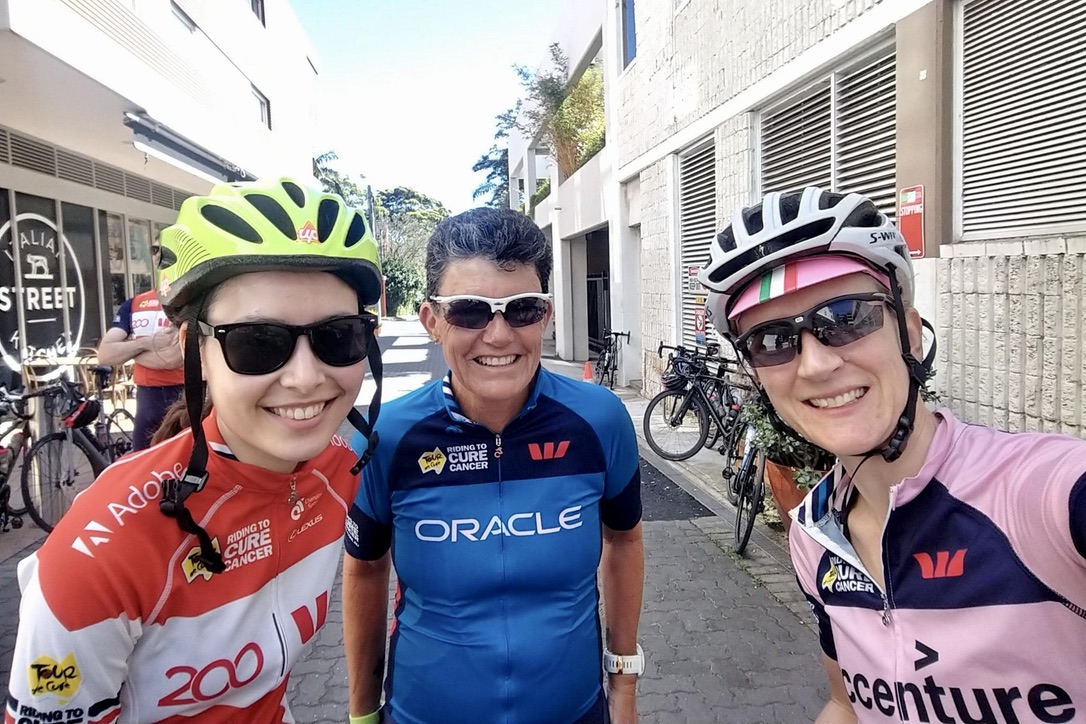My First 100 km Ride
Last Sunday I joined a TDC training ride from Neutral Bay to Church Point and back. It was a day of firsts:
- My first time riding a bike across the Sydney Harbour Bridge
- My first official TDC training ride - these are defined as 50+ km rides in a peloton with official ride leaders who assess our skill and fitness levels
- My first 100 km ride!
Getting to the Start Point
Waking up at 4:10 am, I had breakfast at home, dressed in my kit, then met up with my colleague Nelson, who conveniently lives right across the street from me. We rode to the city together, and rendezvoused with Laura, one of the ride leaders, outside the Westpac building. The three of us continued up north across the Harbour Bridge, towards the start point of the training ride at Neutral Bay.
One thing I’ve realised about these training rides is that even though they may be advertised on Strava as “only” a 60 or 70 km ride, you end up riding a much longer distance because you need to get to the start point from home and back. Some people drive to the start point, but from what I’ve seen, most ride instead.
Briefing
Shortly after 6 am, riders started to arrive at the meeting point behind the Woolworths carpark at Neutral Bay. There was a big group of us - over 50 people had signed up for the ride.
At 6:20 am, the ride leaders delivered a pre-ride briefing. Four main topics were covered:
-
Route: We were briefed on the route. From Neutral Bay, we would follow Military Road to Spit Bridge, then continue up north through Narrabeen and Mona Vale, stopping for a break at Church Point Reserve, before returning the same way.
-
Peloton etiquette: We were reminded of the crucial importance of passing calls up and down the peloton using loud “outside voices”. We were also told our positions in the peloton should be determined by the person next to us, not the person in front of us. By always riding “handlebar to handlebar”, we minimise the risk of collisions.
-
COVID-safe procedures: We were told not to clear our noses while riding in a peloton, to practice social distancing where possible, and to remove helmets and gloves during breaks.
-
Peloton assignment: We were instructed to self-assign into five groups - P1, P2, P3, P4 and P5 (P stands for peloton) - in increasing order of ability. P1 and P2 were designated as “development” pelotons for new riders and were supported by a higher ratio of ride leaders. P4 and P5 were advanced pelotons for experienced riders. The latter groups ride at a faster pace and cover a longer route beyond the standard training ride. Needless to say I assigned myself to P1.
Riding in a Peloton

At 6:30 am we started rolling in descending peloton order, with P5 the first to go and P1 the last. I felt rather nervous about riding in a group with 11 others.
TDC organises 30-km rides every Tuesday and Thursday morning from Centennial Park to La Perouse and back. Those shorter training rides concentrate on improving our bunch-riding skills and applying the TDC Etiquette Guide. I had joined two of those sessions prior to the Sunday ride to Church Point, so I had a small amount of peloton-riding experience, but not enough to make me feel completely confident or at ease.
Overall, the ride with P1 went well. Given all the troubles I’ve had with my clipless pedals (a post for another time!), I am eternally grateful that I was able to stay in control the whole way, unclipping and stopping at traffic lights without major drama.
Here are my key peloton-riding learnings from the day:
-
Calls must be loud: Riding on busy roads, with cars passing and the wind blowing, calls can easily get drowned out by all the background noise. Ride leaders always emphasise we must project our voices when making calls, while taking care not to scream, because that could induce panic instead. Throughout the ride we all got plenty of practice at making and responding to calls, for example
hole left/middle/right,riders back,car passing,over right,lights up,slowing,stopping,singles,double up. -
Keep pedalling when struggling to clip in: The ride was a perfect opportunity to practice my clipping in and clipping out, given all the traffic lights along the way. I am a bit hit-and-miss when it comes to clipping in. Sometimes I get it the first go, while other times I’m still struggling hundreds of metres past the green light. Ride leaders constantly remind us to keep pedalling while attempting to clip in. I’ve learnt that our first priority should always be to build up momentum, to avoid holding up the riders behind us. It sounds easy but I definitely need more practice, especially on those fiendish hill starts.
Heartbreak Hills
The total elevation gain of the ride was 813 metres. The chart below shows the elevation changes as recorded by Strava.

The hills on either side of Spit Bridge (at approximately the 22 km and 67 km marks) were unrelenting and truly testing. I marvel at the fact that I survived them at all.
During the most diabolically painful parts of the climbs, a kaleidoscope of terrible thoughts cycled through my head:
“When I get home, I’m going to lock myself in the bathroom and have a little cry.”
“When I get home, I’m going to angrily demand that I not be spoken to for at least two hours.”
“I’m going to give up right now. I’m just going to stop and I no longer care what anyone thinks.”
Perhaps that’s what my colleagues mean when they say you learn a lot about yourself on painful rides.
The climbs also offered a useful preview into the type of riding we will be doing on tour. The 3-day tour covers 356 km with 3,250 m of elevation, which equates to 9.12 metres of elevation gain per kilometer of distance. This is similar to the ratio of the Sunday ride (813 m / 100 km = 8.13 m of elevation per km of distance).
Breaking 100

After the conclusion of the official ride, Nelson and I cycled back across the Harbour Bridge and down south towards home. Along the way, he checked his Strava tracking and projected that we were going to get near, but not reach, 100 km by the time we got home.
Like me, Nelson had never done a 100 km ride before. Keen to avoid missing out on such an important milestone now that we were so close to achieving it, he said he might do some laps around Tempe Reserve until he reached that magic 100 mark.
It was a sensible plan but my body wanted no part of it. I was absolutely knackered, and I steeled myself to let him know I was going to head home instead.
When we got to the reserve, Nelson let me know we were at 89 km, adding, “your choice”. Against my better judgement, and for reasons I may never fully understand, somehow I heard myself reply, “ok let’s finish it off”.
And so we did lap after mind-numbing lap. It was so boring and painful that I lost count of how many we did, but enlarging the map of Strava’s GPS tracking confirms we completed 10 in total. The moment Nelson signalled for us to turn at the roundabout to head home instead of continuing with the laps was glorious. We finally broke the 100 km barrier, and it was just as well, because I honestly don’t think I could have endured a single more lap.
The Aftermath

You know that sensation when you get off a ship but still feel you’re at sea? That sensation of the floor moving beneath you, and your body swaying and rocking in response? That was exactly how I felt after I got home, but with cycling-specific sensations. I had been pedalling non-stop for so long that when I finally got to lie down, my now-stationary body became convinced I was going to fall off my bike with my feet still clipped into the pedals.
Another thing I noticed in the aftermath is that people love asking “How was the ride?” When we arrived back at Neutral Bay I fielded inquiries from at least five people asking me versions of that same question. There seems to be some expectation that my responses be hyperbolically positive, that I enthusiastically convey my unmitigated and transcendent joy at completing an unprecedentedly brilliant ride. People seem almost disappointed when I merely tell them “it was good!” What they don’t seem to understand is that while my whole being is weighted down by waves of exhaustion, I could hardly conjure up cogent sentences, let alone engage in extended conversations.
Having recovered from the exhaustion, however, I can properly reflect on the day and conclude that it was indeed an amazing ride. Technically I learnt a lot about riding in a peloton, and mentally I learnt a lot about myself, about how I deal with pain and exhaustion. Now I just need to figure out how to do it all again, but for three days in a row on tour!
